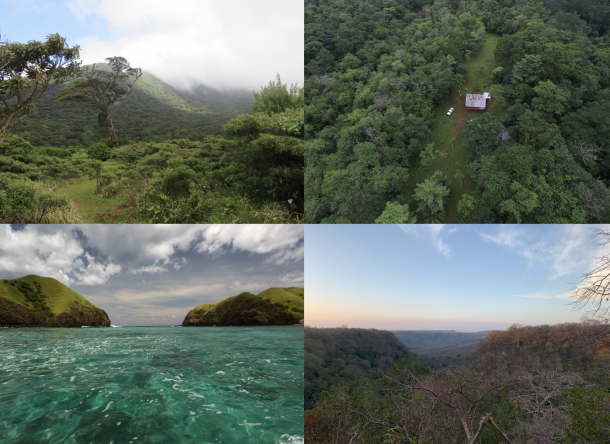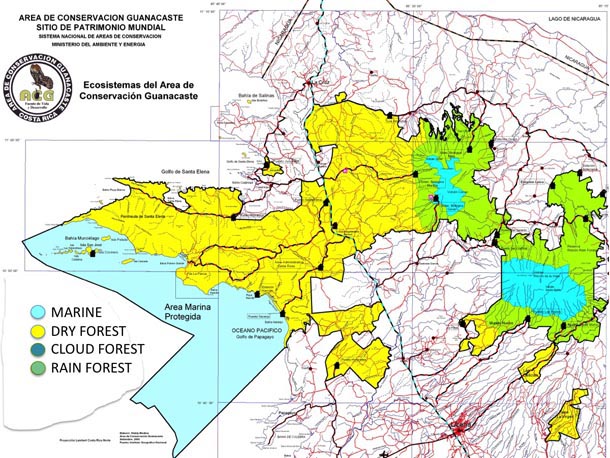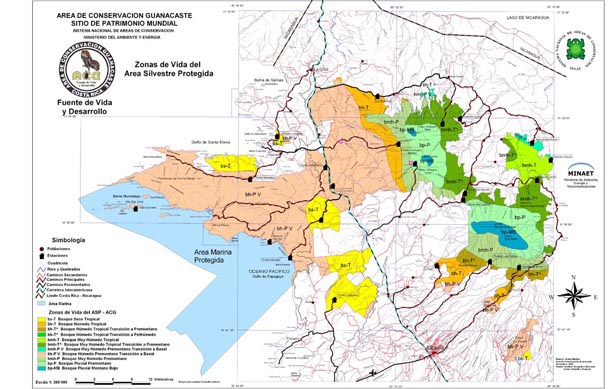Overview: the four major ecosystems
ACG biodiversity may be conveniently partitioned into four of the five major tropical ecosystems: marine, dry forest, cloud forest and rain forest (there is no desert). However, many of ACG’s 500,000+ species move back and forth among various parts of these four ecosystems, while many other species stay home.


Pale blue, marine. Yellow, dry forest. Dark blue, cloud forest. Green, rain forest. These four ecosystems have been subdivided by the science and agricultural guilds into a variety of taxonomic schemes, with the 11 of the Holdridge Life Zone system being perhaps the best known. However, this system was actually developed to aid the agroscape in planning for crop yields, so it only very approximately maps what would be revealed by truly detailed biodiversity understanding of ACG. Equally in the dark are the potential sub-surface marine groupings of habitats and ecosystems, but these will not be clarified for ACG until many years of detailed inventory have been conducted in Sector Marino.

The largest amount of seemingly intact forest is inside the ACG cloud forests and rain forest slopes, above about 700 m elevation and in certain areas. Except for a very few exceptional small patches, the remainder has suffered direct assault by modern humans for 0-400 years.